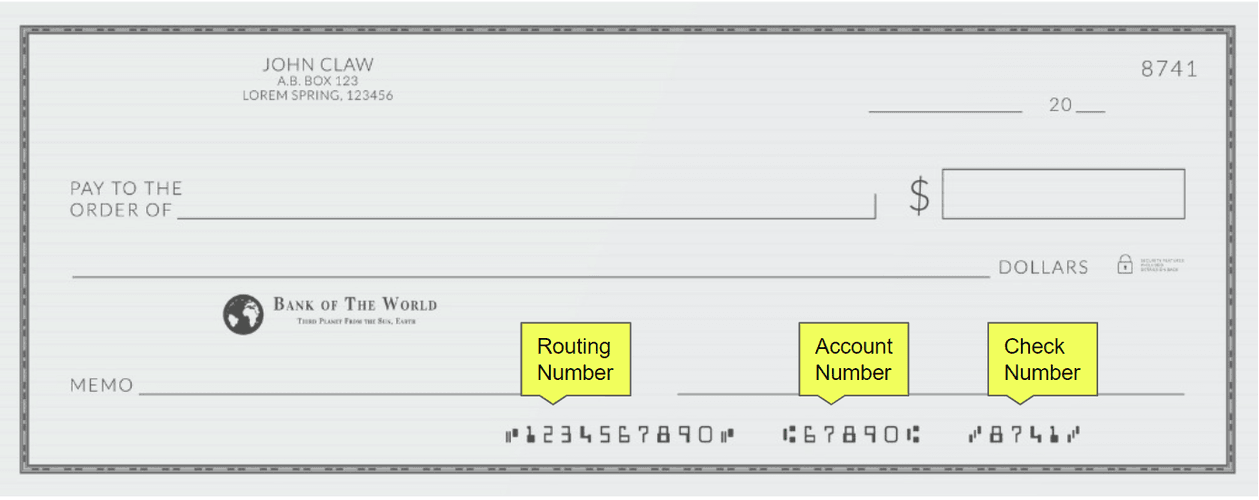What are ACH transfers

Our evaluations and opinions are not influenced by our advertising relationships, but we may earn a commission from our partners’ links. This content is created by TIME Stamped, under TIME’s direction and produced in accordance with TIME’s editorial guidelines and overseen by TIME’s editorial staff. Learn more about it.
ACH is short for “automated clearinghouse,” the Federal Reserve’s system used to transfer funds between financial accounts in the United States. ACH transfers are generally quick and easy to enter for linked accounts, and many banks allow you to send an ACH transfer to other accounts you own with no added fee. Here’s a closer look at the process.
ACH transfers are a type of electronic funds transfer made using the Federal Reserve’s money transfer system. To send or receive an ACH transfer, you should know how the Federal Reserve and your bank know where to send the transfer.
If you try to link an account for ACH transfers, set up direct deposit from an employer, or set up automated bill payments from a checking account, you will need to know your bank’s routing number and your checking account number.
A routing number, sometimes called a “transit number,” is a unique nine-digit identifier for each bank or financial institution able to receive ACH transactions. Some large banks may have multiple routing numbers, so knowing you’re using the correct routing number for your intended account is important. An account number is a unique identifier the bank uses to identify accounts. Every checking and savings account, as well as most other kinds of bank accounts, has an account number assigned by the financial institution. It is usually eight to 12 digits.
For checking accounts the easiest way to find your routing and account numbers is with a paper check, where they are encoded at the bottom of the check using special ink readable by computers.
In addition to ACH transactions, your routing and account numbers are used for check payments, wire transfers, and other banking transactions.
| Pros | Cons |
|---|---|
Low cost. | Some banks and vendors may charge fees. |
Relatively quick. | Not instant, as they can take from one to three business days. |
Supported by virtually all banks in the United States. | Not well suited to international use. |
ACH transfers are the preferred method of payment for countless uses. Here are the best reasons to choose an ACH transfer for a payment.
Many banks allow customers to send ACH transfers for free. If you log into your online banking, you can find options for sending ACH transfers. Check your customer agreement to find out what your bank charges, if it charges at all.
ACH transactions may be received as soon as the next business day, though they may take up to three business days in some situations.
Virtually every bank in the United States supports ACH payments in some form. Even if you can’t enter and send an ACH transfer online, you should always be able to receive one in a standard checking or savings account.
While they’re popular and inexpensive, ACH transfers are not always the best option.
While it’s extremely rare that a bank would charge for incoming ACH transfers, some may charge fees when setting up an outgoing one. Some businesses also charge fees when you pay using an ACH transfer.
ACH transfers take at least one business day to process, so they’re not good for certain transactions. For example, in real estate closings you’ll usually have to pay with a wire transfer, which can be processed the same day. Wire transfers generally come with a fee to send or receive.
Although you can send an international ACH transfer, there are restrictions on doing so. The number of countries that accept them is smaller than those who accept international wire transfers. Also, the transfer must be made in the currency of the receiving country; it can’t be in U.S. dollars. An international ACH transfer is less expensive than a wire transfer, usually under $5, as opposed to anywhere from $15 to $50. It also doesn’t incur the small processing fee, also called a “lifting fee,” that a wire transfer does.
In general, international ACH transfers are best used for payments of smaller amounts that aren’t particularly urgent, such as payroll direct deposits and recurring vendor payments. Wire transfers are better for sending larger amounts or an important payment that must go through quickly. They also provide end-to-end tracking, unlike an ACH transfer.
An international wire transfer is sent via the SWIFT system (ACH doesn’t use it). You may also use some third-party tools, such as PayPal, for international transfers.
The majority of bank accounts don't charge fees for sending or receiving ACH transfers. But the majority doesn’t mean all, so you may encounter fees from some account providers.
For 2023 banks will pay an annual fee of $344 to participate in the ACH network and an additional $0.000185 per transaction. That’s incredibly cheap, but, of course, computers do most or all of the work. According to a 2022 survey by the Association of Financial Professionals (AFP), the cost of sending and receiving an ACH for businesses is between $0.26 and $0.50 per transaction.
ACH transfers generally come in two forms: push transactions and pull transactions.
An example of a push would be sending money from your bank account to somewhere else using the sending bank’s tools. The sending bank packages up the ACH information and sends it to the network. These transactions are usually the fastest type of ACH.
A pull transaction is made when the transaction starts with the receiving bank account. The payee bank sends a request to the sending bank, and the sending bank responds with the transfer. Because there are more steps involved, it can take a little longer.
In some cases ACH transfers complete as soon as the next day. If you send funds from one bank account to an account you own at another bank and make the request early enough in the day, you may see the funds in your receiving bank account the next morning.
The longest processing time for an ACH is three days. This is most likely to occur when you enter a pull transaction late in the business day.
Depending on your bank’s rules, funds may not be available as soon as the ACH completes. Some banks may hold all or a portion of a transaction for new customers and transactions deemed high risk.
To transfer funds as quickly as possible, the ACH transaction should originate from the sending bank. If the transfer is already entered, there’s no way to speed it up. You just have to wait for it to settle. If you need to move funds faster, a wire transfer is in order. Unfortunately, you will almost certainly incur additional costs.
If you want to send funds using other methods, such as wire transfers, these are among the most popular.
ACH transfers act as a cornerstone of the U.S. financial transaction landscape. With the Federal Reserve's backing, they provide individuals with a seamless, cost-effective, and relatively quick method for handling money transfers, both personally and for business.
As alternatives such as Zelle or third-party apps evolve, electronic funds transfer options will become more robust. However, the convenience and value of ACH transfers demonstrate why they remain vital in today's financial world.
Most ACH transfers require a linked account using the routing and account numbers. Depending on your bank, you may need to pay a fee or go through steps to unlock ACH capabilities.
Wire transfers are same-day transfers from one bank account to another that come with a fee of anywhere from $15 to $50. ACH transfers are either free or low-cost transfers that take one to three business days to process.
Many banks allow ACH transfers for free. If your bank doesn’t, shop around for a better checking account.
The information presented here is created by TIME Stamped and overseen by TIME editorial staff. To learn more, see our About Us page.




